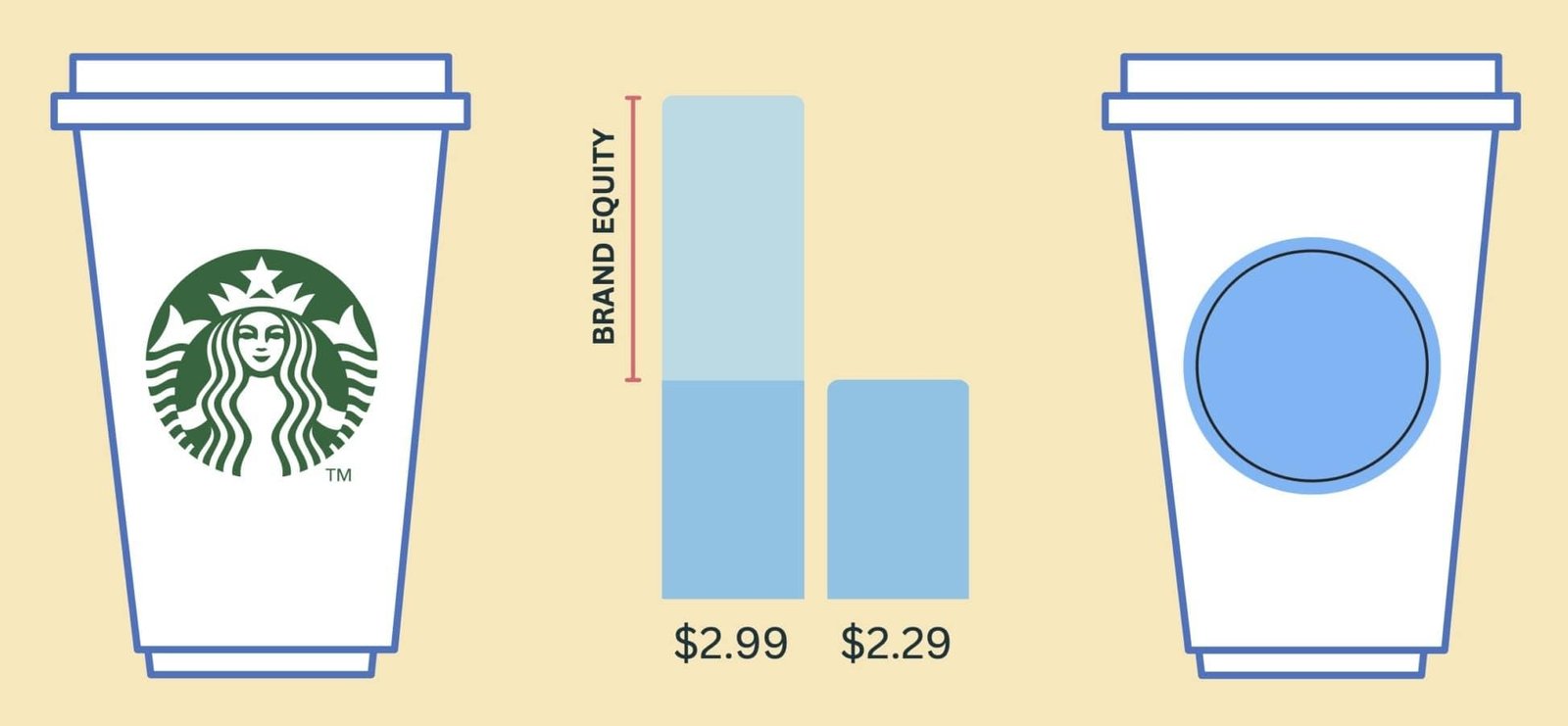What makes you choose one brand over another, even when the products are similar? That’s brand equity at work. It’s the value your brand holds in customers’ minds.
Think of it as trust and loyalty built over time. Whether you’re a business owner or marketer, understanding brand equity matters. It’s not just for big companies. Even small businesses can benefit from building brand equity.
Building it takes consistency, quality, and connection. But where do you start? Let’s explore the basics and actionable steps to create lasting brand value.
Disclaimer: If you buy any products through links on this site, I may earn a commission. But it doesn't make any difference to your cost, and it helps me keep this blog running. So you could always read my articles for free.
What is brand equity?
Brand equity is the value your brand holds in the minds of customers. It’s about trust, loyalty, and perception. A strong brand equity means customers choose your brand over others, even if competitors offer similar products.
Think about Apple. Its products aren’t just devices—they’re symbols of innovation and quality. That’s brand equity in action. Customers associate Apple with reliability and are often willing to pay more for it.
Brand equity builds over time through consistent quality, clear messaging, and positive customer experiences. For example, Starbucks has decades of loyal customers because it delivers on its promise of a refreshing beverage.

You can start building your brand equity by focusing on customer trust and delivering value. It’s not instant, but the long-term payoff is worth it.
Why is brand equity important?
Brand equity matters because it directly impacts your business’s success. It’s the reason people trust and choose your brand. Strong brand equity makes your products more appealing, even when others offer similar options.
Take Nike, for example. Customers don’t just buy shoes—they buy into a brand known for quality, performance, and inspiring athletes. That emotional connection allows Nike to charge premium prices and maintain customer loyalty.
Brand equity also helps you expand. When Amazon introduced Alexa, it succeeded partly because customers already trusted the Amazon name. Strong equity makes launching new products easier.
It’s not just about revenue—it’s about resilience. When you build brand equity, you can withstand setbacks better. Think of Toyota. After recalls, its strong reputation helped regain customer trust.
Investing in brand equity means focusing on quality, trust, and long-term value. It’s how you build a business that lasts.
How to build brand equity
Building brand equity takes effort and consistency. It’s about creating trust, loyalty, and value in the minds of your customers. Here are three practical techniques to help you get started.
Deliver consistent quality
Your brand is only as strong as the experience you provide. Consistency builds trust over time. Customers should know what to expect from you, whether it’s product quality, customer service, or delivery speed.
Think of Coca Cola. Whether you buy it in New York or Tokyo, it tastes the same. This consistency reassures customers and builds loyalty.
To achieve this, focus on your core offering. Invest in quality control and gather feedback regularly. Tools like SurveyMonkey can help you measure customer satisfaction.
Use the data to improve weak areas. For instance, if customers complain about long wait times, streamline your process.
Build an emotional connection
People don’t just buy products—they buy experiences and feelings. Emotional branding creates a strong connection with your audience.

Consider Nike’s “Just Do It” campaign. It’s not just about shoes; it’s about pushing boundaries and overcoming challenges. This messaging resonates deeply with athletes and fitness enthusiasts.
To build emotional connections, share stories that align with your brand values. For example, if you run an eco-friendly business, highlight your sustainability efforts.
Use platforms like Instagram to showcase behind-the-scenes stories, customer testimonials, or milestones.
Leverage brand advocates
Word-of-mouth is powerful. When customers recommend your brand, it boosts credibility and trust. To build brand equity, encourage loyal customers to become brand advocates.
Apple does this brilliantly. Many Apple users proudly showcase their devices, creating organic promotion. The company fuels this by offering exceptional customer support and creating products worth talking about.
Start by identifying your most loyal customers. Tools like HubSpot can help track engagement and purchases. Offer them rewards or exclusive perks for referrals. You could start a loyalty program or send personalized thank-you notes.
Another idea: Collaborate with micro-influencers who genuinely love your brand. Their followers often trust their recommendations. Tools like Upfluence can help you find influencers that align with your values.
Focus on customer experience
Your customers’ experience with your brand plays a significant role in shaping its perception. A positive experience fosters trust and loyalty.
It’s not just about offering a great product; it’s about how you make your customers feel at every interaction.
For example, Zappos, an online shoe retailer, is renowned for its exceptional customer service. From hassle-free returns to 24/7 support, Zappos prioritizes customer satisfaction, which has helped build its brand equity over the years.
To improve your customer experience, start by mapping your customer journey. Identify pain points and address them promptly. Use tools like Zendesk to streamline customer support and ensure quick, effective responses.
Besides that, do regular surveys to gather feedback and implement changes based on customer needs.
Build a strong brand identity
Your brand identity is how your audience recognizes and connects with your brand. It includes your logo, colors, voice, and overall personality. A clear, consistent identity helps people remember you and understand what you stand for.
Coca-Cola is a great example. Its red-and-white logo, distinctive bottle design, and cheerful messaging are instantly recognizable worldwide. This consistency reinforces its identity in the minds of customers.

To build your brand identity, define your values and voice. Choose colors, fonts, and visuals that reflect your brand’s personality. Tools like Adobe Spark or Canva can help you create cohesive designs.
Ensure consistency across all platforms—your website, social media, and packaging should align seamlessly.
Create valuable content
Content is a powerful way to educate, engage, and build trust with your audience. By offering useful information, you position your brand as an authority in your industry and build brand equity.
HubSpot excels at this by providing free resources like blogs, guides, and webinars on marketing and sales. These resources help their audience succeed, strengthening HubSpot’s credibility and brand equity.
To get started, identify topics your audience cares about. Use tools like Google Trends or AnswerThePublic to discover common questions. Create content that addresses these needs, whether it’s blog posts, videos, or infographics.
For instance, if you run a fitness brand, share workout tips or healthy recipes. Distribute your content on social media, email, and your website to maximize reach.
Prioritize transparency and authenticity
Being honest and authentic builds trust, which is crucial for brand equity. Customers appreciate brands that are open and genuine.
Take Patagonia as an example. The outdoor clothing company is transparent about its environmental impact and actively supports sustainability. This honesty resonates with its audience, enhancing brand loyalty and trust.
To implement this, be clear about your products, pricing, and policies. Acknowledge mistakes openly and explain how you’re fixing them.
Use social media platforms to share behind-the-scenes moments, employee stories, or your brand’s mission. Transparency shows your customers that you’re real and trustworthy.
Offer value beyond your product
Customers don’t just want products; they want solutions and support. Providing value beyond what you sell strengthens your connection with them.
For instance, Sephora offers free beauty tutorials and personalized consultations in addition to its products. These services make customers feel valued, turning them into loyal fans.

To offer extra value for building brand equity, consider creating educational content or providing free tools. For example, if you’re in the tech industry, offer webinars on using your software.
Platforms like YouTube or Zoom are great for hosting tutorials or live sessions. By helping customers succeed, you deepen their trust and attachment to your brand.
Maintain consistent communication
Consistent communication helps your audience stay connected to your brand. It reminds them who you are and what you offer.
Think of Wendy’s on Twitter. Their witty and consistent engagement keeps followers entertained and maintains brand visibility. Whether through ads, emails, or social media posts, regular communication reinforces your presence.
Create a content calendar to schedule posts, emails, or updates. Use tools like Hootsuite to manage your social media and ensure a steady flow of content.
Personalize emails with tools like Mailchimp to keep your communication relevant and engaging.
Collaborate with complementary brands
Partnering with other brands can introduce you to a new audience and boost your credibility. Collaboration can enhance your reach and improve brand equity.
For example, Uber and Spotify teamed up to let riders control their music during trips. This collaboration combined their audiences and added value for both.
Identify brands with similar values but different offerings. Reach out with a proposal that benefits both parties.
For instance, a fitness equipment brand could partner with a nutrition supplement company for a co-branded campaign. Use platforms like LinkedIn to find potential partners and communicate your ideas.
Final thoughts on building brand equity
Building brand equity isn’t a quick fix. It requires consistent effort and a clear focus on delivering value. By ensuring quality, connecting emotionally, and empowering advocates, you can strengthen your brand and grow its long-term value. Start small, measure your progress, and adjust as needed.
Did I miss anything? Did you try these tips? Do you have any questions or comments? Share your thoughts below in the comments section.




